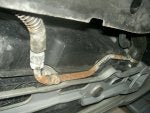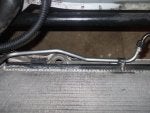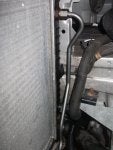While replacing A/C compressor and dryer I found this rusty line (see attached pic), connecting between the torque convertor and the tranny cooler in front of the radiator. I want to buy online but don't know its technical term to search for. What is that line called?
Thanks,
Thanks,

















